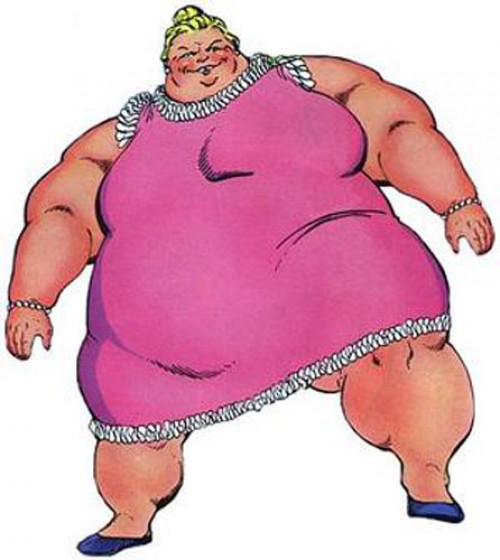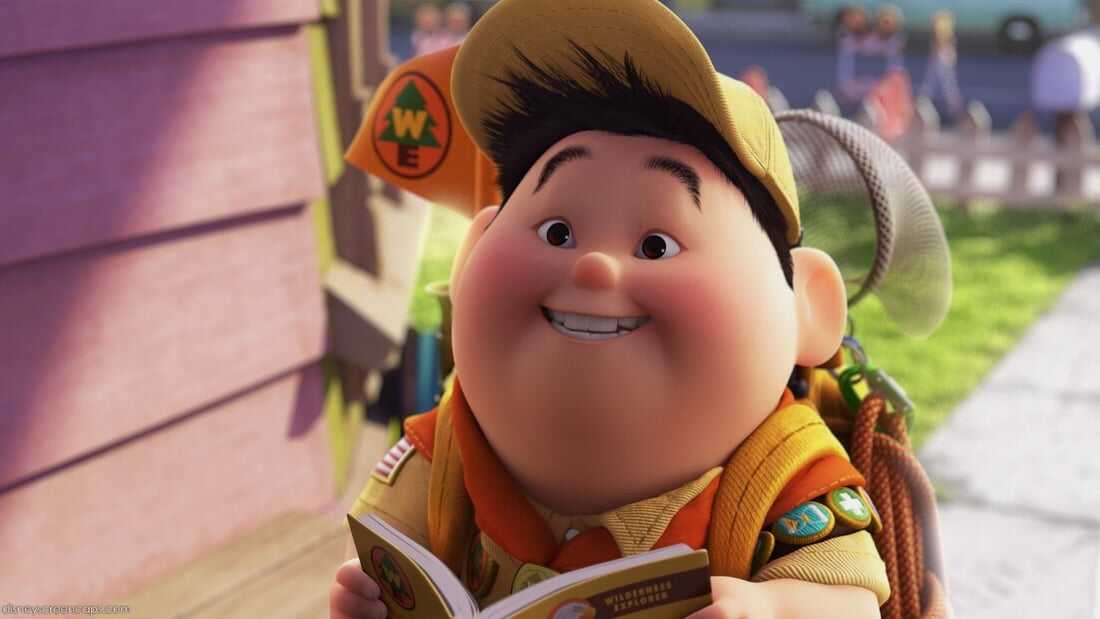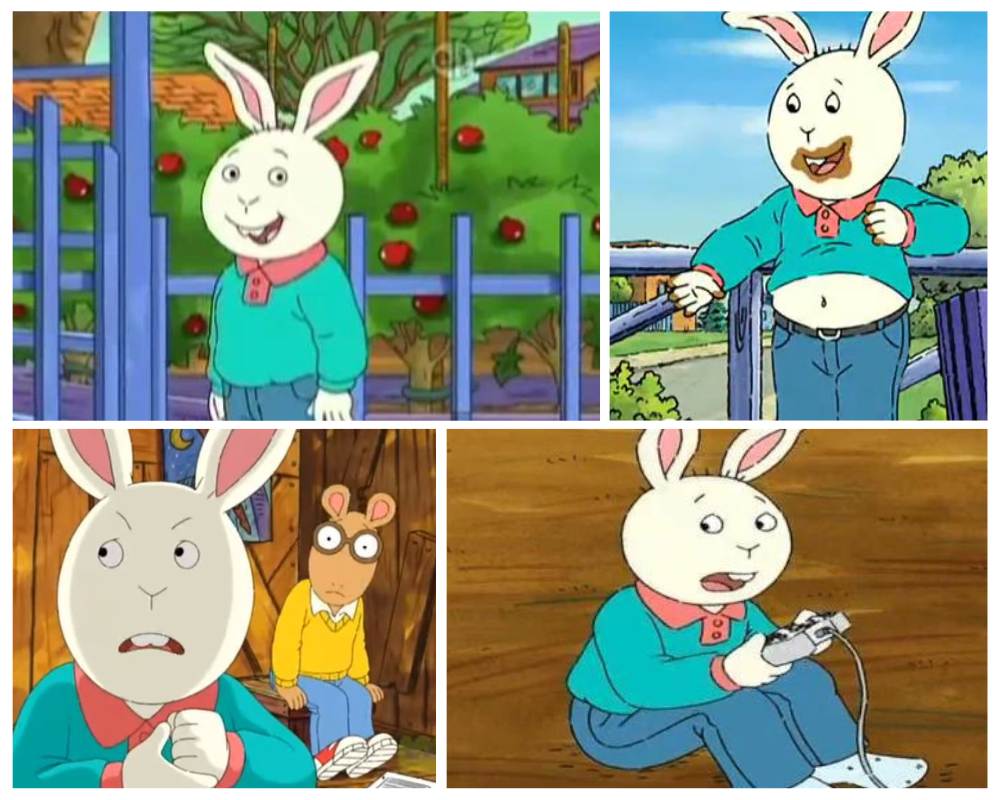Fat White Cartoon Characters: Exploring The Iconic And Beloved World Of Animation
Apr 17 2025
When we talk about fat white cartoon characters, we’re diving into a realm that’s as colorful as it is controversial. These characters have been around for decades, shaping generations of viewers with their quirky personalities and unforgettable stories. From classic TV shows to modern animated films, these figures have left an indelible mark on pop culture. Whether you love them or find them problematic, there’s no denying their influence on the animation industry.
Now, let’s be real here. Fat white cartoon characters aren’t just about physical appearance; they’re about the stories they tell, the messages they convey, and the way they reflect societal norms. Some of these characters are beloved because of their humor, while others spark debates about representation and stereotypes. So, buckle up, because we’re about to break it all down for you in a way that’s both informative and entertaining.
Before we dive deeper, let’s get one thing straight. This article isn’t just about pointing fingers or criticizing. It’s about understanding the context, appreciating the artistry, and exploring the impact these characters have had on audiences worldwide. If you’re ready to learn more, keep reading. Trust me, you don’t want to miss this!
Read also:Gillian Turner Body Measurements A Comprehensive Guide And Facts You Need To Know
Why Fat White Cartoon Characters Matter in Animation
Let’s start with the basics. Fat white cartoon characters aren’t just random creations; they’re often designed to serve a purpose. Whether it’s to add comedic relief, explore complex themes, or even challenge societal norms, these characters bring something unique to the table. Think about it. Characters like Homer Simpson, Peter Griffin, and Garfield have become household names. But why? What makes them so special?
For starters, these characters often represent a specific archetype. They’re the everyman, the underdog, or the lovable goofball. Their flaws make them relatable, and their humor keeps us entertained. But there’s more to it than that. These characters also reflect the cultural and social contexts of their time. For example, Homer Simpson’s portrayal as a bumbling but well-meaning dad speaks to the struggles of the average working-class American.
Breaking Down the Stereotypes
Now, let’s talk about the elephant in the room. Some fat white cartoon characters have been criticized for perpetuating harmful stereotypes. But is that always the case? Not necessarily. While some characters might reinforce negative tropes, others challenge them in meaningful ways. Take Garfield, for instance. Sure, he’s lazy and loves food, but he’s also fiercely independent and loyal to his friends. It’s all about balance, folks.
Here’s the thing. Representation matters. And when it comes to fat white cartoon characters, it’s important to look at the bigger picture. Are these characters being used to mock or belittle? Or are they being portrayed with respect and nuance? The answer isn’t always black and white, but it’s definitely worth discussing.
A Brief History of Fat White Cartoon Characters
Let’s take a trip down memory lane. Fat white cartoon characters have been around for a long time. From early animated shorts to modern-day blockbusters, these figures have evolved alongside the animation industry itself. But how did it all begin? Well, it started with a few pioneering creators who saw potential in unconventional character designs.
One of the earliest examples is Popeye’s nemesis, Bluto. Sure, he wasn’t exactly a sympathetic character, but his larger-than-life presence added depth to the stories. Then came characters like Wimpy from the same series, who was obsessed with hamburgers. These early depictions laid the groundwork for what was to come.
Read also:Picture Of Johnny Jetts Wife A Closer Look At Her Life Style And Influence
The Rise of Modern Icons
Fast forward to the 90s, and we see the emergence of some of the most iconic fat white cartoon characters in history. Homer Simpson, Peter Griffin, and Joe Swanson became household names, each bringing their own unique flavor to the table. These characters weren’t just funny; they were relatable. They represented the struggles and triumphs of everyday life, making them resonate with audiences worldwide.
But it wasn’t just about the characters themselves. It was about the stories they told. Shows like "The Simpsons" and "Family Guy" tackled real-world issues with humor and heart, making them more than just entertainment. They were a reflection of the times, and that’s what made them so special.
Understanding the Appeal
So, why do people love fat white cartoon characters so much? Is it the humor? The relatability? Or something else entirely? The answer is probably a combination of all these factors. These characters have a way of connecting with audiences on a personal level, making them feel seen and understood.
Take Homer Simpson, for example. Sure, he’s flawed. He’s lazy, clumsy, and often makes bad decisions. But he’s also a devoted family man who loves his wife and kids. That duality is what makes him so endearing. People see themselves in him, and that’s powerful.
What Makes Them Stand Out
One thing that sets fat white cartoon characters apart is their ability to be both ridiculous and relatable. They’re not afraid to be vulnerable, and that’s what makes them so compelling. Whether it’s Peter Griffin’s awkward social interactions or Joe Swanson’s unapologetic sarcasm, these characters have a way of making us laugh while also making us think.
Plus, let’s not forget the artistry behind these creations. Animators pour their hearts into designing these characters, giving them distinct features and personalities that make them unforgettable. It’s not just about the physical appearance; it’s about the soul of the character.
The Impact on Pop Culture
There’s no denying that fat white cartoon characters have had a significant impact on pop culture. From merchandise to memes, these figures have become ingrained in our collective consciousness. But what does that mean for society as a whole?
On one hand, these characters have brought joy and laughter to millions of people. They’ve provided a much-needed escape from the stresses of everyday life. On the other hand, they’ve also sparked important conversations about representation and diversity. Are we doing enough to include a wider range of characters in animation? It’s a question worth asking.
Challenging the Norms
Some fat white cartoon characters have taken it upon themselves to challenge societal norms. Take "BoJack Horseman," for example. While not strictly a fat white character, the show’s exploration of mental health and addiction resonates with audiences of all backgrounds. It’s proof that animation can be both entertaining and thought-provoking.
And let’s not forget about "The Cleveland Show." While it may have its flaws, it attempted to tackle issues of race and identity in a way that few other animated series had done before. These examples show that fat white cartoon characters don’t have to be one-dimensional. They can be complex, nuanced, and even revolutionary.
Controversies and Criticisms
Of course, no discussion about fat white cartoon characters would be complete without addressing the controversies. Some people argue that these characters perpetuate harmful stereotypes, while others believe they’re harmless fun. So, where do we draw the line?
It’s important to remember that art is subjective. What one person finds offensive, another might find hilarious. That doesn’t mean we shouldn’t have conversations about it, though. In fact, it’s crucial that we engage in these discussions to ensure that representation is fair and respectful.
Learning from the Past
One way to move forward is by learning from the past. Animation studios have made strides in recent years to diversify their casts and tell more inclusive stories. But there’s still work to be done. By acknowledging the mistakes of the past, we can create a better future for animation.
And let’s not forget about the fans. Audiences have the power to influence change by supporting shows that prioritize diversity and representation. It’s a collective effort, and every voice matters.
Conclusion: What We’ve Learned
So, there you have it. Fat white cartoon characters are more than just animated figures on a screen. They’re reflections of our society, our values, and our struggles. Whether you love them or criticize them, there’s no denying their impact on the world of animation.
As we’ve explored in this article, these characters have the power to entertain, educate, and even challenge us. They remind us that representation matters, and that diversity should be celebrated. So, the next time you watch your favorite cartoon, take a moment to appreciate the artistry and thought that went into creating it.
And hey, if you’ve enjoyed this article, don’t forget to share it with your friends! Let’s keep the conversation going and continue to explore the fascinating world of animation together. Who knows? Maybe we’ll discover something new along the way. Thanks for reading, and see you in the next one!
Table of Contents
- Why Fat White Cartoon Characters Matter in Animation
- Breaking Down the Stereotypes
- A Brief History of Fat White Cartoon Characters
- The Rise of Modern Icons
- Understanding the Appeal
- What Makes Them Stand Out
- The Impact on Pop Culture
- Challenging the Norms
- Controversies and Criticisms
- Learning from the Past


